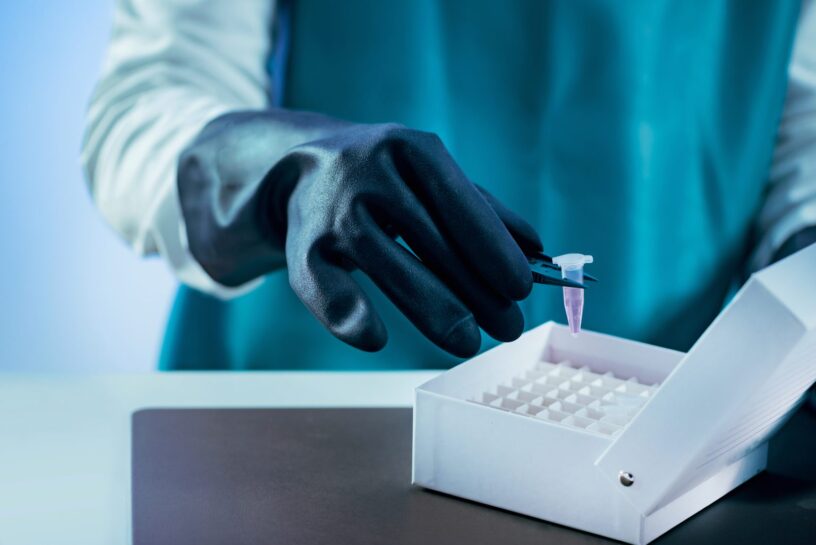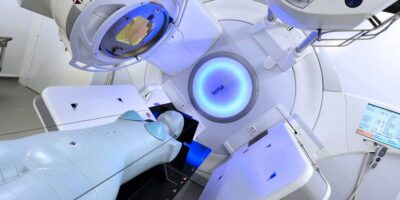Bio-Banks Market size was estimated at USD 76.74 billion in 2023 and is projected to grow at a compound annual growth rate (CAGR) of 8.8% from 2024 to 2030.
The biobanks market involves the collection, storage, and management of biological samples, such as human tissues, blood, DNA, and other biomaterials, for use in research, clinical trials, and personalized medicine. Biobanks play a crucial role in advancing medical research, enabling the discovery of new biomarkers, and supporting the development of precision medicine.
Overview:
Biobanks are facilities that systematically collect, process, store, and distribute biological samples, which can be used for various purposes, including genetic research, drug development, and disease prevention strategies. These repositories are vital in studying genetic diseases, understanding disease mechanisms, and developing new therapeutic approaches.
Market Components:
- Types of Biobanks:
- Population-Based Biobanks: These collect and store samples from large groups of individuals, often with a focus on studying common diseases or genetic variations across populations.
- Disease-Oriented Biobanks: These focus on collecting samples from individuals with specific diseases, such as cancer, cardiovascular diseases, or neurological disorders.
- Tissue Biobanks: Specialize in the collection and storage of tissue samples, particularly useful in oncology research and personalized medicine.
- Umbilical Cord Biobanks: Store umbilical cord blood and tissue, which are rich sources of stem cells used in regenerative medicine and treatment of various blood disorders.
- Sample Types:
- Blood and Plasma: Commonly stored for a wide range of applications, including genetic research and disease biomarker discovery.
- DNA/RNA: Collected for genetic studies and precision medicine applications.
- Tissues and Organs: Stored primarily for cancer research, drug development, and transplantation research.
- Stem Cells: Stored for use in regenerative medicine and treatment of genetic disorders.
- Technologies and Equipment:
- Cryopreservation Systems: Used for long-term storage of biological samples at very low temperatures to preserve their viability.
- Automated Sample Storage and Retrieval Systems: Enhance the efficiency of managing large biobank inventories.
- Data Management Systems: Essential for tracking sample collection, storage conditions, and associated metadata, often integrated with laboratory information management systems (LIMS).
Market Size and Growth:
The biobanks market is experiencing significant growth due to the increasing demand for personalized medicine, the rise in chronic diseases, and advancements in genomics and biotechnology. The growing interest in population genetics, epidemiological studies, and drug discovery is also contributing to market expansion.
- Global Expansion: The market is expanding globally, with significant growth in regions such as North America, Europe, and Asia-Pacific. Governments and private institutions are increasingly investing in biobank infrastructure to support research and healthcare innovation.
- Rising Demand for Personalized Medicine: As the healthcare industry shifts towards personalized medicine, the need for high-quality biological samples for research and drug development is driving the growth of biobanks.
- Technological Advancements: Innovations in cryopreservation, automation, and data management are improving the efficiency and capacity of biobanks, further fueling market growth.
Trends:
- Expansion of Genomic Biobanks:
- Genomic Research: The growing focus on genomics and precision medicine is driving the expansion of biobanks that specialize in storing genetic material for large-scale genomic studies.
- Integration with Big Data and AI:
- Data Analytics: The integration of big data analytics and artificial intelligence (AI) in biobanks is enabling more sophisticated analysis of biological samples, facilitating biomarker discovery, and enhancing the efficiency of research processes.
- Growth of Public-Private Partnerships:
- Collaborative Efforts: Public and private sector collaborations are becoming more common, leading to the development of large-scale biobanks that can support extensive research projects and clinical trials.
- Ethical and Regulatory Focus:
- Compliance and Standards: As biobanking practices expand, there is an increasing focus on ethical considerations, data privacy, and compliance with regulatory standards to ensure the responsible use of biological samples.
- Development of Virtual Biobanks:
- Digital Repositories: The concept of virtual biobanks, which provide digital access to sample data without the need for physical transfer of samples, is gaining traction. These biobanks allow researchers to access and analyze sample data remotely.
Challenges:
- Ethical and Legal Issues:
- Informed Consent and Privacy: Ensuring informed consent and maintaining patient privacy are major challenges, particularly as biobanks store sensitive genetic and health data.
- Sample Quality and Standardization:
- Consistency in Sample Handling: Variability in sample collection, processing, and storage can affect the quality and usability of samples, making standardization across biobanks a critical challenge.
- Cost and Sustainability:
- Operational Costs: The high costs associated with establishing and maintaining biobank infrastructure, including storage and data management, can be a barrier to sustainability.
- Data Management and Integration:
- Complexity: Managing and integrating large datasets from different biobanks, particularly in global research collaborations, is complex and requires robust data management systems.
- Regulatory Compliance:
- Navigating Regulations: Biobanks must navigate a complex regulatory landscape, with varying requirements across regions, which can hinder international collaborations and sample sharing.
Market Drivers:
- Advancements in Precision Medicine:
- Targeted Therapies: The growing focus on precision medicine and the need for personalized treatments are driving demand for high-quality biological samples.
- Increased Funding and Investments:
- Government and Private Funding: Increased investments from governments, private companies, and research institutions are fueling the development and expansion of biobanks.
- Growing Incidence of Chronic Diseases:
- Research Needs: The rising prevalence of chronic diseases, such as cancer, diabetes, and cardiovascular diseases, is leading to greater demand for biobanked samples for research and drug development.
- Technological Innovations:
- Enhanced Storage and Analysis: Innovations in cryopreservation, automated storage systems, and data analytics are improving the efficiency and capacity of biobanks, making them more valuable to researchers.
- Global Health Initiatives:
- Population Health: Global health initiatives aimed at understanding population health and genetic diversity are driving the establishment of large-scale biobanks.
Future Outlook:
The biobanks market is expected to continue growing, driven by advancements in genomics, the increasing demand for personalized medicine, and the expanding role of biobanks in supporting global health initiatives. The market will likely see further integration of advanced technologies, such as AI and big data analytics, enhancing the ability to manage and analyze vast amounts of biological data. Ethical considerations and regulatory compliance will remain key challenges, requiring ongoing efforts to develop standardized practices and ensure the responsible use of biobank resources. As biobanks become increasingly central to medical research and healthcare, their role in shaping the future of medicine will continue to expand.
Click Here, To Get Free Sample Report https://stringentdatalytics.com/sample-request/bio-banks-market/15780/
Market Segmentations:
Global Bio-Banks Market: By Company
Thermo Fisher
Beckman Coulter
Panasonic
SOL Group
Promega
Merck
Greiner Bio One
Chart Industries
Brooks Life Science
Tecan Group
QIAGEN
BD
Lifeline Scientific
Hamilton
So-Low
TTP Labtech Ltd
Biolife Solutions
DNA Genotek
Custom Biogenic Systems
LVL Technologies
BioRep
Global Bio-Banks Market: By Type
Population Based Biobank
Disease-Oriented Biobank
Other
Global Bio-Banks Market: By Application
Medicine Research
Therapeutic
Other
Global Bio-Banks Market: Regional Analysis
The regional analysis of the global Bio-Banks market provides insights into the market’s performance across different regions of the world. The analysis is based on recent and future trends and includes market forecast for the prediction period. The countries covered in the regional analysis of the Bio-Banks market report are as follows:
North America: The North America region includes the U.S., Canada, and Mexico. The U.S. is the largest market for Cold-chain Pharma in this region, followed by Canada and Mexico. The market growth in this region is primarily driven by the presence of key market players and the increasing demand for the product.
Europe: The Europe region includes Germany, France, U.K., Russia, Italy, Spain, Turkey, Netherlands, Switzerland, Belgium, and Rest of Europe. Germany is the largest market for Cold-chain Pharma in this region, followed by the U.K. and France. The market growth in this region is driven by the increasing demand for the product in the automotive and aerospace sectors.
Asia-Pacific: The Asia-Pacific region includes Singapore, Malaysia, Australia, Thailand, Indonesia, Philippines, China, Japan, India, South Korea, and Rest of Asia-Pacific. China is the largest market for Cold-chain Pharma in this region, followed by Japan and India. The market growth in this region is driven by the increasing adoption of the product in various end-use industries, such as automotive, aerospace, and construction.
Middle East and Africa: The Middle East and Africa region includes Saudi Arabia, U.A.E, South Africa, Egypt, Israel, and Rest of Middle East and Africa. The market growth in this region is driven by the increasing demand for the product in the aerospace and defense sectors.
South America: The South America region includes Argentina, Brazil, and Rest of South America. Brazil is the largest market for Cold-chain Pharma in this region, followed by Argentina. The market growth in this region is primarily driven by the increasing demand for the product in the automotive sector.
Click Here, To Buy Premium Report https://stringentdatalytics.com/purchase/bio-banks-market/15780/?license=single
About Stringent Datalytics
Stringent Datalytics offers both custom and syndicated market research reports. Custom market research reports are tailored to a specific client’s needs and requirements. These reports provide unique insights into a particular industry or market segment and can help businesses make informed decisions about their strategies and operations.
Syndicated market research reports, on the other hand, are pre-existing reports that are available for purchase by multiple clients. These reports are often produced on a regular basis, such as annually or quarterly, and cover a broad range of industries and market segments. Syndicated reports provide clients with insights into industry trends, market sizes, and competitive landscapes. By offering both custom and syndicated reports, Stringent Datalytics can provide clients with a range of market research solutions that can be customized to their specific needs
Contact Us
Stringent Datalytics
Contact No- +1 346 666 6655
Email Id- sales@stringentdatalytics.com




Leave a Reply